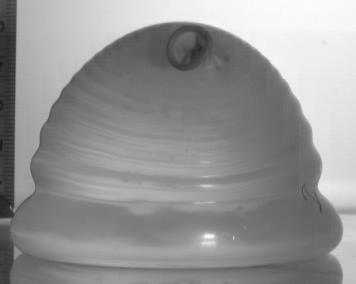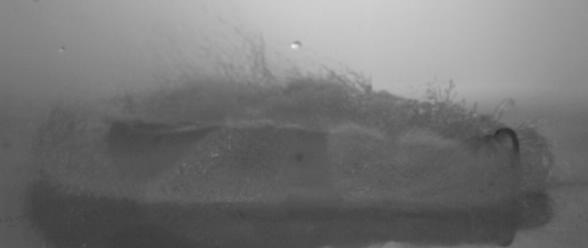One of the problems in this year’s International Young Physicists’ Tournament (IYPT), called “Water Bombs”, was as follows:
Some students are ineffective in water balloon fights as the balloons they throw rebound without bursting. Investigate the motion, deformation, and rebound of a balloon filled with fluid. Under what circumstances does the balloon burst?
In one of the New Zealand selection rounds, Stan Sarkies (Wellington High School) approached us to use our high speed camera for experimental work on this problem. Stan was eventually part of the New Zealand team of 5 students who won a silver medal at the IYPT main event in Shrewsbury, England.
These experiments were a little bit messier than we thought they would be, because it turns out that your average Warehouse water balloon is pretty tough. A vertical drop of 2 metres wasn’t usually enough to break one, and then there is the problem of hitting the target, especially from an angle … anyway, click for a movie:
This sort of movie is pretty similar to some water drop experiments we’ve seen before: drops in space and bouncing from a superhydrophobic surface. The similarity in terms of the overall drop behaviour (and some of the surface waves) goes to show how important surface tension is to a water drop – the surface of a drop basically acts like a stretchy piece of elastic, although not as strong as a balloon.
Keen observers will have noticed that the shape of the balloons is slightly more complicated than that of a drop in the first moments after impact. The differences are that there is a mismatched boundary between the elastic and the water, that liquids (unlike solids) do not support shear waves, and that there are bubbles and water pockets in the balloons.
When a water balloon impacts with enough kinetic energy or inertia (the ‘oomph’ it has when it hits the surface), the surface tension is overcome, and the balloon bursts. We can see that it fractures (cracks) where the tension is greatest, in a ring around the edge of the spreading rim. With the tension released, the water escapes through this fracture.
We see the same effect with water drops, where a drop spreads and the pressure build-up overcomes the surface tension. Because there is no solid surface, there is no fracture and and water escapes in many little droplets – a splash. It is actually pretty difficult to get a drop to bounce off a surface without splashing. The surface has to be smooth and water-repellent and the drop height has to be just right so that the surface tension is not overcome, but the drop still has enough energy to bounce.
As always with high-speed photography, some of still images are pretty strange.




